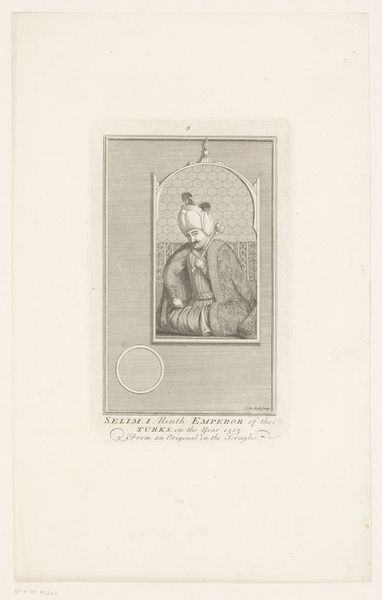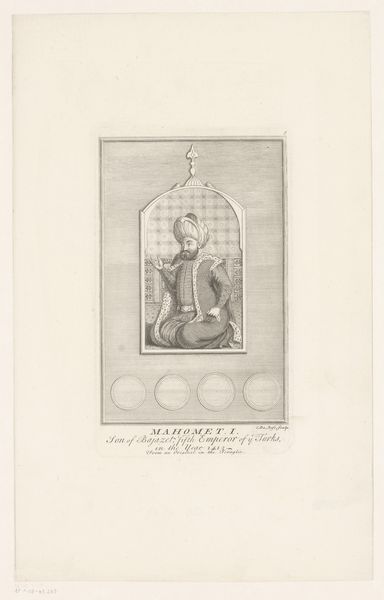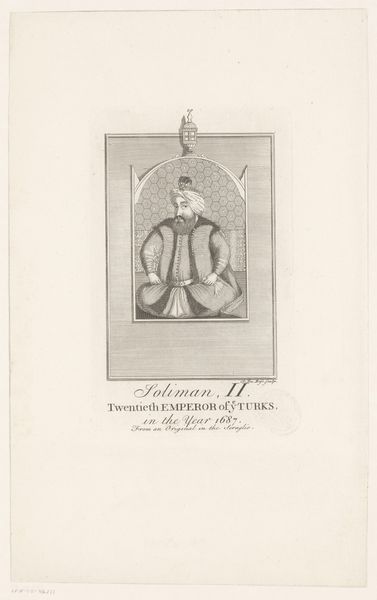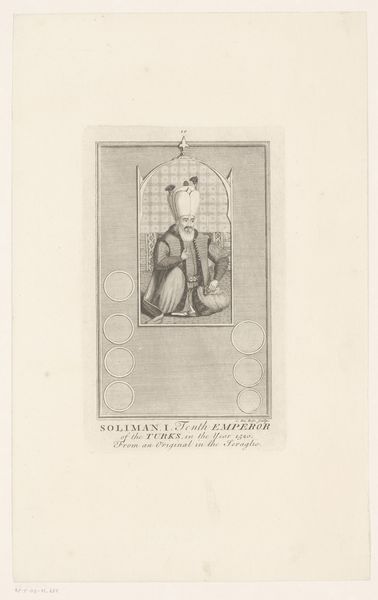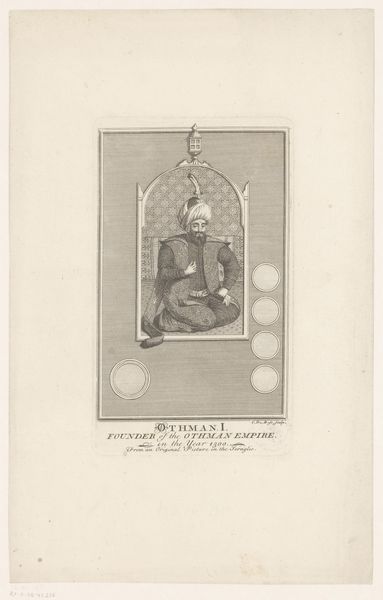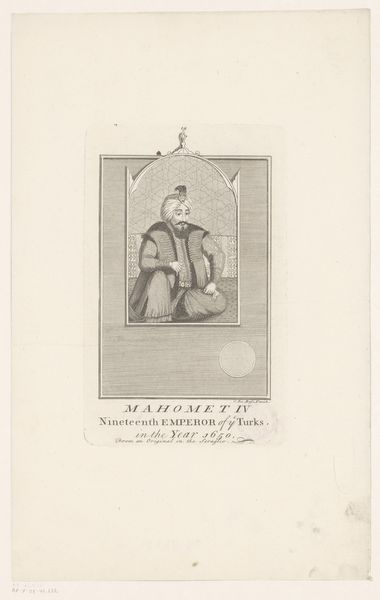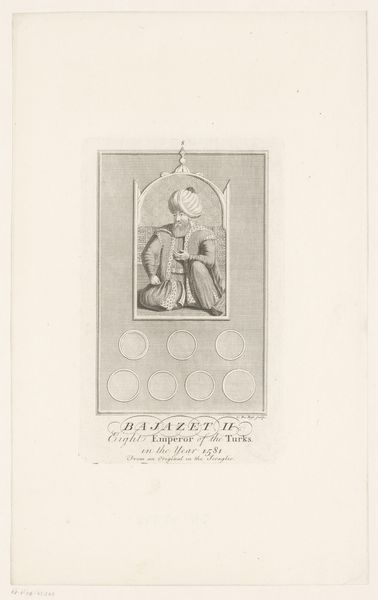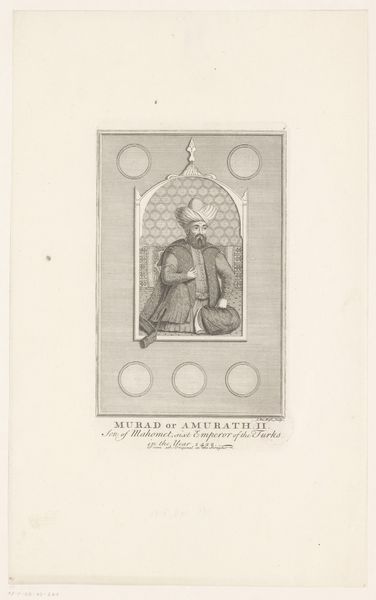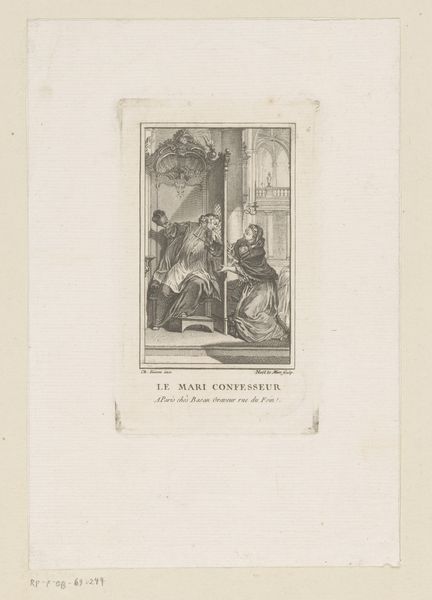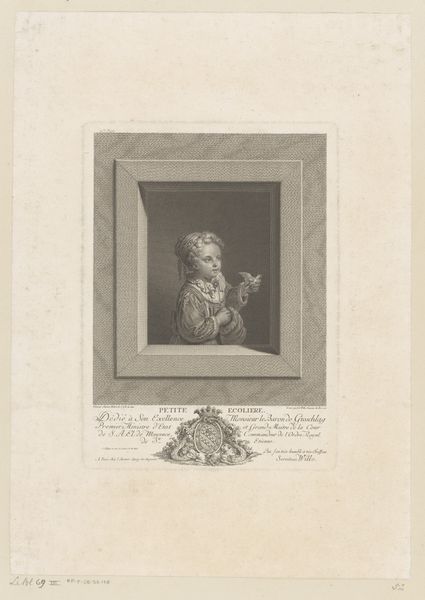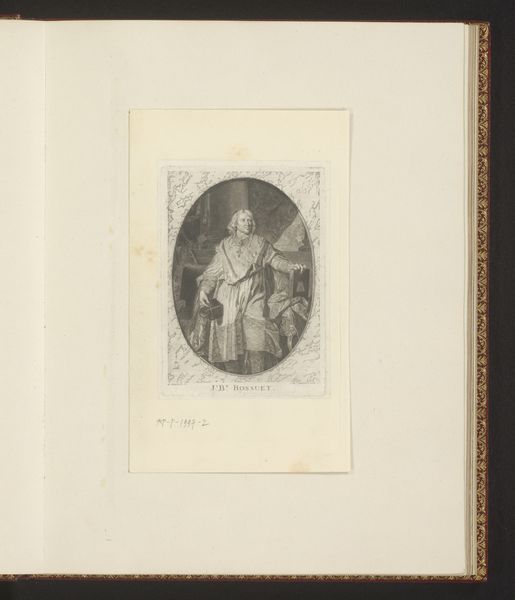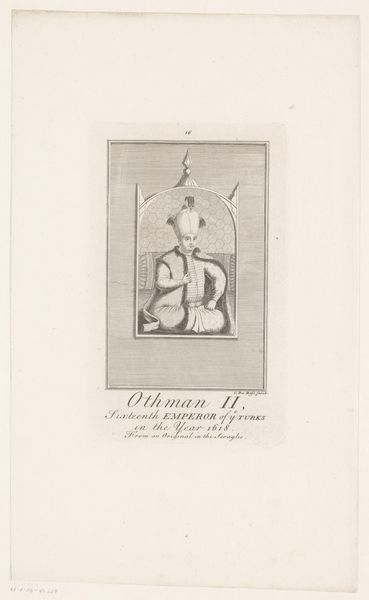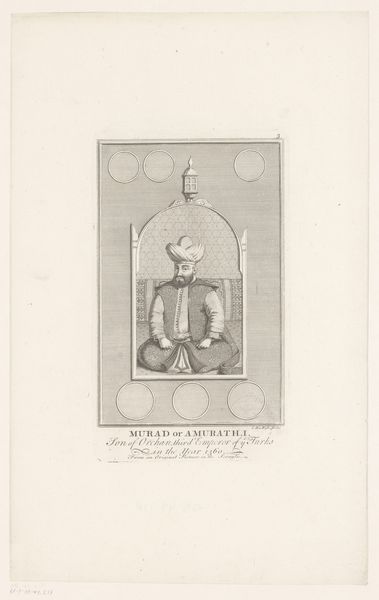
engraving
#
portrait
#
old engraving style
#
islamic-art
#
history-painting
#
engraving
Dimensions: height 195 mm, width 122 mm
Copyright: Rijks Museum: Open Domain
Curator: We're looking at a delicate engraving titled "Portret van Ahmed II," created sometime between 1692 and 1745, and attributed to Claude DuBosc. Editor: Immediately, the geometric patterns surrounding Ahmed II create a sort of contained yet expansive space. The meticulous lines suggest a deliberate focus on representation. Curator: Indeed, the linear precision, so typical of engraving, dictates our visual experience. Note the meticulous rendering of fabric textures through the manipulation of line weight and density; observe how these lines contribute to the construction of form. The interplay between the figure and background offers compelling symmetry. Editor: What's also remarkable is how accessible such portraits became through this engraving process, creating a dissemination of power and images. Think about the artisans needed to produce these plates – their labor integral to broadcasting the image of the Sultan. What does the transition from unique painted portrait to multiple reproduced engravings suggest? Curator: Certainly, it opens dialogues on authenticity and accessibility within visual culture. Moreover, one can read the piece semiotically; the formal framing functions as a deliberate construct, both literally containing and conceptually elevating the Sultan within an orb of power. Editor: Perhaps, but its function extends to transforming that individual—that leader—into a marketable, exportable entity. The texture, as you pointed out, simulates richness, and it all adds to the perception and commodification of a ruler within European circles. The engraving isn't simply reflecting power, it’s producing it through labor. Curator: So, are you then positing the image merely as a reflection of external sociopolitical concerns? Can’t we allow that its artistic merit hinges also on formal concerns of light, shadow, and form— elements intrinsic to any portrait, and any artistic undertaking? Editor: That’s a false dilemma. It's both an object born from artistic skill and an object steeped in political and socio-economic considerations. Curator: Perhaps a fair point to land on. It's a dense encapsulation that pushes the boundaries of portraiture— both outward toward larger systems and inward to pure line and shape. Editor: Absolutely; the tensions in production yield fascinating results.
Comments
No comments
Be the first to comment and join the conversation on the ultimate creative platform.
